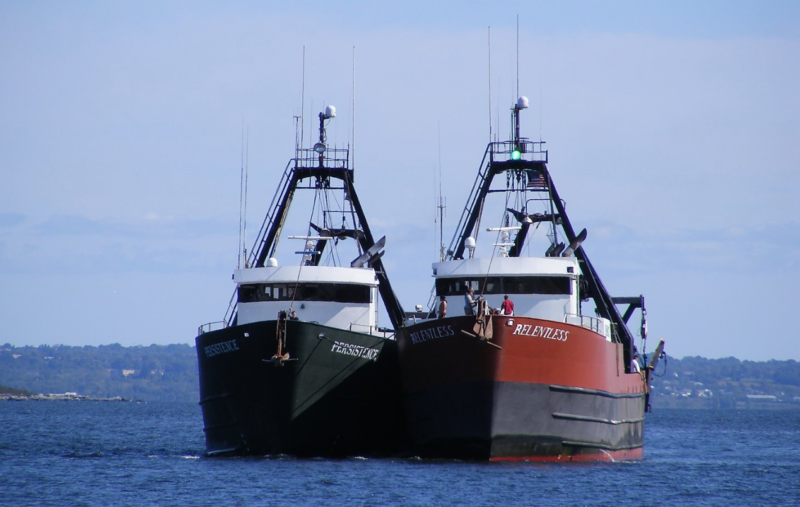An economic study from the Science Center for Marine Fisheries shows the East Coast squid fishery lands more than $30 million in direct income annually but generates some $243 million in total economic output for New England and the Mid-Atlantic states.
The study, conducted for the center for science and industry research by Andrew Scheld of the Virginia Institute of Marine Science is welcomed by industry advocates, who say there have been few attempts to quantify the fishery’s total economic impact.
His work pulled in data “collected from seafood processors and independent vessels, combined with well-established economic impact models to determine the fishery’s employment, revenue, and overall economic contributions,” according to a statement from the science center announcing the findings.
The report could be critical to the squid fleet and processors who are trying to get a bigger say in how offshore wind energy is developed off southern New England and the Mid-Atlantic. Early on as the Bureau of Ocean Energy Management began considering wind developers’ proposals, fishermen pointed out the NOAA landings data going into that analysis lowballed the squid sector’s real value to the economy and jobs.
“It just goes to show the regulators, the folks making the decisions and the wind industry that you cannot rely on ex-vessel value (of squid landings) alone,” said Meghan Lapp, fisheries liaison for Seafreeze Ltd. In North Kingstown, R.I.
Seafreeze was one source for data toward the study, along with other Rhode Island processors Sea Fresh USA and The Town Dock, Top Catch in New York, and Lund’s Fisheries in New Jersey, and independent vessel operators.
Numbers for operators’ expenditures and sales went into models to calculate the economic output. For costs to vessels targeting longfin squid, operators reported most of their revenue went to pay captains and crews at 53.5 percent, with fuel and lubricant taking 14.3 percent and vessel and engine repairs accounting for 7 percent.
The findings could be important for determining any compensation to the industry as a result of offshore wind developments.
“If compensation measures only say, ‘We’re going to compensate for ex-vessel value,’ where does that leave the processors and others” who derive income from the resource? said Lapp.
The longfin squid fleet is based mainly in Rhode Island, New York and New Jersey, and the study was undertaken primarily to help analyze potential conflicts with the budding offshore wind energy industry. Offshore energy lease areas already awarded to developers by the federal Bureau of Ocean Energy Management lie across prime squid grounds.
Industry advocates have long warned how the highly volatile, year-to-year shifts in squid patterns mean there’s no telling how building arrays of massive turbine towers will shut down areas to fishing with bottom trawls.
The Atlantic loligo fishery accounts for 21 percent of U.S. squid landings but 78 percent of the sector’s value, thanks to the higher prices paid for its plump, light-colored products.
“Loligo squid is a significant part of our business and is also a Marine Stewardship Council-certified, sustainable fishery with its products in demand in the U.S., Europe and Asia,” Jeff Kaelin, director of sustainability and government relations for Lund’s Fisheries, said in a statement. “This study shows the extent to which our fishery has grown in size and economic importance, which needs to be considered by both fishery and wind-energy regulators making decisions impacting our future.”
The squid fishery has long been an important fishery for us in New Jersey, and for fishing communities across the region,” said Greg DiDomenico, chairman of the SCEMFIS Industry Advisory Board, and executive director of the Garden State Seafood Association. “It’s important, especially as we look for ways to support the industry during these current challenges, to know what’s at stake, how many people depend on this fishery, and its economic impact, from the boats to the table.”
Lund’s Fisheries and the Garden State Seafood Association are original members of the center’s Industry Advisory Board.







